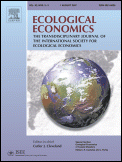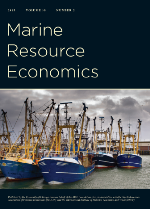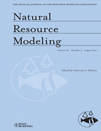Eric Hoffer is a very interesting thinker, and I very much enjoyed his The Ordeal of Change. If possible, I would quote large parts of the book, but have to settle for some short excerpts. Many of them demonstrate Hoffer’s deep understanding of the human psyche. I try to quote generously rather than commenting too much.
It has been often said that power corrupts. But it is perhaps equally important to realize that weakness, too, corrupts. Power corrupts the few, while weakness corrupts the many. Hatred, malice, rudeness, intolerance, and suspicion are the fruits of weakness. The resentment of the weak does not spring from any injustice done to them but from the sense of their inadequacy and impotence. We cannot win the weak by sharing our wealth with them They feel our generosity as oppression. […] Nor can we win the weak by sharing our hope, pride, or even hatred with them. […] Our healing gift to the weak is the capacity for self-help. We must learn how to impart to them the technical, social, and political skills which would enable them to get bread, human dignity, freedom, and strength by their own efforts [pp. 11-12*].
While written more than fifty years ago, certain parts feel oddly relevant for the present-day social media driven self-realization epidemic:
An autonomous existence is heavily burdened and beset with fears, and can be endured only when bolstered by confidence and self-esteem. The individual’s most vital need is to prove his worth, and this usually means an insatiable hunger for action. For it is only the few who can acquire a sense of worth by developing and employing their capacities and talents. The majority prove their worth by keeping busy. A busy life is the nearest thing to a purposeful life. But whether the individual takes the path of self-realization or the easier one of self-justification by action he remains unbalanced and restless. For he has to prove his worth anew each day [p. 25].
On creativity of the intellectual:
There is no unequivocal evidence that the intellectual is at his creative best when left wholly on his own. It is not at all certain that individual freedom is a vital factor in the release of creative energies in literature, art, music, and science. Many of the outstanding achievements in these fields were not realized in an atmosphere of absolute freedom. […] There is a chronic insecurity at the core of the creative person, and he needs a milieu that will nourish his confidence and sense of uniqueness. Discerning appreciation and a modicum of deference and acclaim are probably more vital for his creative flow than freedom to fend for himself. Thus a despotism that recognizes and subsidizes excellence might be more favorable for the performance of the intellectual than a free society that does not take him seriously. […] It is of course conceivable that a wholly free society might become imbued with a reverence for the fine arts; but up to now the indications have been that where common folk have room enough there is not much room for the dignity and rank of the typical writer, artist, and intellectual in general [pp. 31-32].
More on the intellectual:
One cannot escape the impression that the intellectual’s most fundamental incompatibility is with the masses. He has managed to thrive in social orders dominated by kings, nobles, priests, and merchants, but not in societies suffused with the tastes and values of the masses. The trespassing by the masses into the domain of culture and onto the stage of history is seen even by the best among the intellectuals as a calamity [pp. 42-43].
Ordeal is not really a book in the typical sense, but rather a collection of essays that revolve around a common theme. Thus, Hoffer ranges far and wide in topics and relations, and takes the opportunity to comment on, for example, history:
From their first appearance civilizations almost everywhere were preoccupied with the spectacular, the fantastic, the sublime, the absurd, and the playful—with hardly a trickle of ingenuity seeping into the practical and useful. The prehistoric discoveries and inventions remained the basis of everyday life in most countries down to our time. Technologically, the Neolithic Age lasted even in Western Europe down to the end of the eighteenth century [p. 48].
In an essay on ‘the brotherhood of men’, Hoffer points out a surprisingly accurate contrast between my relationship with those close and humanity in general. (But I remain ambivalent, and my relationships are repeatedly turned up side down. Perhaps I need the maturity of Hoffer to settle.)
It is easier to love humanity as a whole than to love one’s neighbor. There may even be a certain antagonism between love of humanity and love of neighbor; a low capacity for getting along with those near us often goes hand in hand with a high receptivity to the idea of the brotherhood of men. […] The capacity for getting along with our neighbor depends to a large extent on the capacity for getting along with ourselves. The self-respecting individual will try to be as tolerant of his neighbor’s shortcomings as he is of his own. Self-righteousness is a manifestation of self-contempt. When we are conscious of our worthlessness, we naturally expect others to be finer and better than we are, and it is as if we wished to be disappointed in them. Rudeness luxuriates in the absence of self-respect [pp. 74-75].
According to Hoffer, modern man strives with self-respect, and with a certain grandeur, he connects it with global conflict.
The unattainability of self-respect has […] grave consequences. In man’s life the lack of an essential component usually leads to the adoption of a substitute. The substitute is usually embraced with vehemence and extremism, for we have to convince ourselves that what we took as second choice is the best there ever was. Thus blind faith is to a considerable extent a substitue for the lost faith in ourselves; insatiable desire a substitute for hope; accumulation a substitute for growth; fervent hustling a substitute for purposeful action; and pride a substitute for unattainable self-respect .The pride that at present pervades the world is the claim that one is a member of a chose group—be it a nation, race, church, or party. No other attitude has so impaired the oneness of the human species and contributed so much to the savage strife of our time [p. 76].
On the writer:
To the genuine writer the word is an end in itself and the center of his existence. He may dream of spectacular action and be lured to play an active role, but in the long run he does not feel at home in the whirl of busy life. […] It is only when the creative flow within him materializes in serried ranks of words that he feels at home in the world [p. 87].
Playfulness and creativity:
[…] the tendency to carry youthful characteristics into adult life, which renders man perpetually immature and unfinished, is at the root of his uniqueness in the universe, and is particularly pronounced in the creative individual. Youth has been called a perishable talent, but perhaps talent and originality are always aspects of youth, and the creative individual is an imperishable juvenile. When the Greeks said, “Whom the gods love die young” they probably meant, as Lord Sankey suggested, that those favored by the gods stay young till the day they die; young and playful [p. 93].
* Page numbers refer to the limited edition printed by Buccaneer Books, Inc. The Ordeal of Change was first published in 1963.
Related post:
The Baltagi–Griffin general index of technical change for panel data has earlier been applied to aggregated data via the use of period dummy variables. Period dummies force modeling into estimation of the latent level of technology through choice of dummy structure. Period dummies also do not exploit the full information set because the order of observations within periods is ignored. To resolve these problems, I suggest estimating the empirical equation for all possible structures of the dummy variables. The average over the different dummy coefficient estimates provides an index of technical change. More generally, the method estimates a general, model-free trend in linear models. I demonstrate the method with both simulated and real data.
 We develop a discretization method to construct a discrete finite-time bioeconomic model, corresponding to bioeconomic models with continuous-time growth function, but allowing the analysis of seasonality in fisheries. The discretization method consists of three steps: first, we estimate a proper growth function for the continuous-time model with the Ensemble Kalman Filter. Second, we use the Runge-Kutta method to discretize the growth function. Third, we use the Bellman approach to analyze the optimal management of seasonal fisheries in a discrete-time setting. We analyze both the case of quarterly harvest and the case of monthly harvest, and we compare these cases with the case of annual harvest. We find that seasonal harvesting is a win–win optimal solution that provides higher harvest, higher optimal steady state equilibrium, and higher economic value than annual harvesting. We also demonstrate that the discretization method overcomes the errors and preserves the strengths of both continuous and discrete-time bioeconomic models.
We develop a discretization method to construct a discrete finite-time bioeconomic model, corresponding to bioeconomic models with continuous-time growth function, but allowing the analysis of seasonality in fisheries. The discretization method consists of three steps: first, we estimate a proper growth function for the continuous-time model with the Ensemble Kalman Filter. Second, we use the Runge-Kutta method to discretize the growth function. Third, we use the Bellman approach to analyze the optimal management of seasonal fisheries in a discrete-time setting. We analyze both the case of quarterly harvest and the case of monthly harvest, and we compare these cases with the case of annual harvest. We find that seasonal harvesting is a win–win optimal solution that provides higher harvest, higher optimal steady state equilibrium, and higher economic value than annual harvesting. We also demonstrate that the discretization method overcomes the errors and preserves the strengths of both continuous and discrete-time bioeconomic models. Deslauriers et al. (2011) found that students subject to research-based instruction scored more than twice as well as students subject to traditional lecture tutoring (74% vs. 41%). Both attendance and engagement reportedly went up. The authors were seemingly puzzled by the increased attendance (‘reason not known’), while it seems obviously a case of rubbernecking or something similar but more sophisticated. (Google awaits!)
Deslauriers et al. (2011) found that students subject to research-based instruction scored more than twice as well as students subject to traditional lecture tutoring (74% vs. 41%). Both attendance and engagement reportedly went up. The authors were seemingly puzzled by the increased attendance (‘reason not known’), while it seems obviously a case of rubbernecking or something similar but more sophisticated. (Google awaits!)




